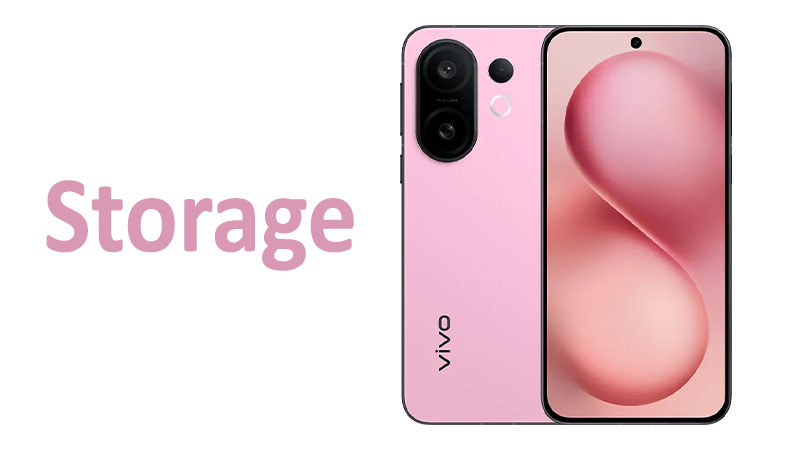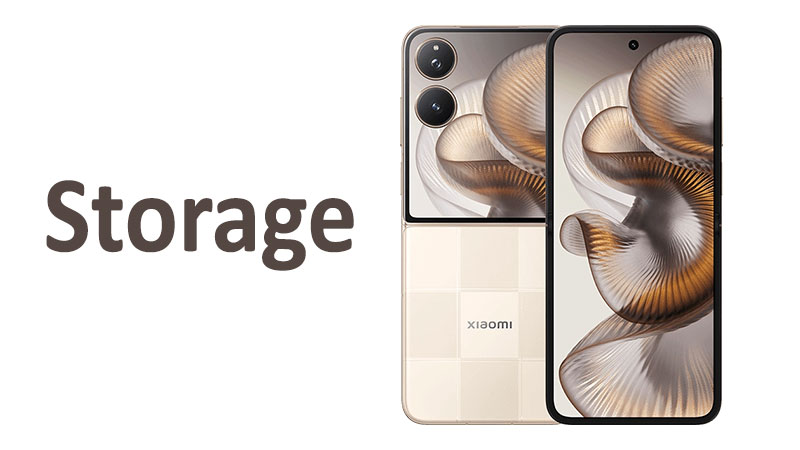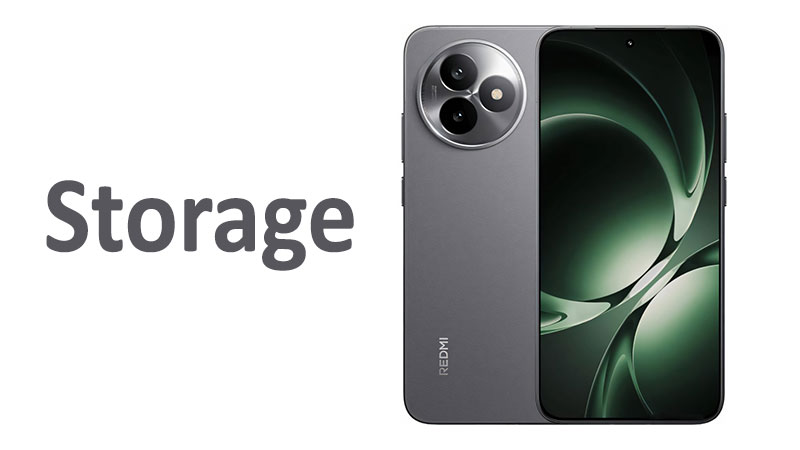The vivo X200 FE offers users generous internal storage options of 256GB and 512GB. These substantial capacities ensure ample space for applications, high-resolution photos, 4K videos, and a wide array of digital content, catering to diverse user needs and enhancing the overall smartphone experience by minimizing concerns about running out of storage.
Storage Specifications of vivo X200 FE
| Feature | Specification |
|---|---|
| Internal Storage | 256GB / 512GB |
| Storage Type | UFS 3.1 |
| Expandable Storage | Not supported |
Detailed Explanation of the Storage Feature
The storage capabilities of the vivo X200 FE are designed to meet the demands of modern smartphone usage, offering both significant capacity and high-speed performance.
Internal Storage Capacities: 256GB and 512GB
The vivo X200 FE is available in two internal storage configurations: 256GB and 512GB. These options provide users with considerable flexibility to choose a variant that best suits their digital lifestyle.
- 256GB: This capacity is more than sufficient for the average smartphone user. It can comfortably hold thousands of photos, hundreds of videos, numerous applications, and a substantial music library. For users who primarily use their phone for social media, Browse, and casual photography, 256GB offers ample room without frequently needing to offload data.
- 512GB: This larger capacity is ideal for power users, content creators, and individuals who store a vast amount of data directly on their device. This includes professional photographers, videographers, avid mobile gamers with large game installations, and those who download many movies or TV shows for offline viewing. The 512GB option significantly reduces the need for external storage solutions or frequent data management.
Storage Type: UFS 3.1
The vivo X200 FE utilizes UFS 3.1 (Universal Flash Storage 3.1) technology for its internal storage. UFS 3.1 is a high-performance flash storage standard that offers significant advantages over older eMMC (embedded MultiMediaCard) and even earlier UFS versions.
- Speed: UFS 3.1 boasts impressive read and write speeds. This translates directly to a smoother user experience, including:
- Faster App Loading: Applications launch almost instantaneously.
- Quicker File Transfers: Moving large files, such as 4K videos or extensive photo albums, between the phone and a computer is significantly faster.
- Rapid Data Processing: Tasks like opening large documents, rendering video edits, or processing complex game assets are expedited.
- Smoother Multitasking: The system can quickly access data for multiple running applications, leading to seamless transitions and improved overall responsiveness.
- Efficiency: While delivering high speeds, UFS 3.1 is also designed to be power-efficient, contributing to the phone’s overall battery longevity. This is achieved through better power management and optimized data transfer protocols.
- Reliability: UFS 3.1 storage is known for its robustness and reliability, ensuring data integrity and consistent performance over the lifespan of the device.
Non-Expandable Storage
It’s important to note that the vivo X200 FE does not support expandable storage via a microSD card slot. This means users must carefully consider their storage needs when purchasing the device, as the chosen internal capacity will be the only storage available on the phone itself. While this might be a limitation for some who rely on expandable storage, the high internal capacities (256GB and 512GB) aim to mitigate this by providing ample built-in space. Users can still utilize cloud storage services for additional backup and access to their files.
Comparison: vivo X200 FE Storage vs. Competitors
When comparing the storage of the vivo X200 FE, it’s evident that the use of UFS 3.1 is a strong point, aligning it with other flagship and high-end devices in terms of speed. Many mid-range phones still use UFS 2.x, which is noticeably slower, or even eMMC, which is significantly behind.
For instance, while a budget phone might offer 128GB of eMMC storage, the X200 FE’s 256GB or 512GB UFS 3.1 provides not only more space but also a superior performance experience. Some premium flagships are now transitioning to UFS 4.0, which offers even faster speeds. While UFS 4.0 is the bleeding edge, UFS 3.1 remains an excellent performer, providing a negligible difference in real-world everyday use for most users compared to UFS 4.0.
The lack of expandable storage is a common trend among many flagship and premium devices, including some from Samsung and Apple. This design choice often allows for better internal component optimization, potentially contributing to features like larger batteries or enhanced water resistance. For users upgrading from phones with microSD card slots, this is a key consideration.
Who Should Choose 256GB vs 512GB?
- 256GB:
- Ideal for everyday users
- Light to moderate app usage
- Occasional 4K video recording
- Moderate gaming
- 512GB:
- Power users and mobile gamers
- Frequent 4K/8K video recording
- Heavy app multitasking
- Creatives using editing software
If you’re unsure how much storage you need, consider how often you take videos, install large games, or save media offline.
Conclusion
The vivo X200 FE’s internal storage, offered in 256GB and 512GB capacities, combined with the high-speed UFS 3.1 standard, ensures a responsive and capacious user experience. While it does not support expandable storage, the substantial built-in options cater to the needs of most users, from casual to heavy, providing quick app launches, rapid file transfers, and ample room for a growing digital life.
FAQ
No, the vivo X200 FE does not support expandable storage via a microSD card slot. Users should choose the appropriate internal storage variant (256GB or 512GB) based on their needs.
For heavy gaming, the 512GB variant is recommended. Modern games often have large installation sizes, and the extra space ensures you can install numerous titles without worrying about running out of storage.



